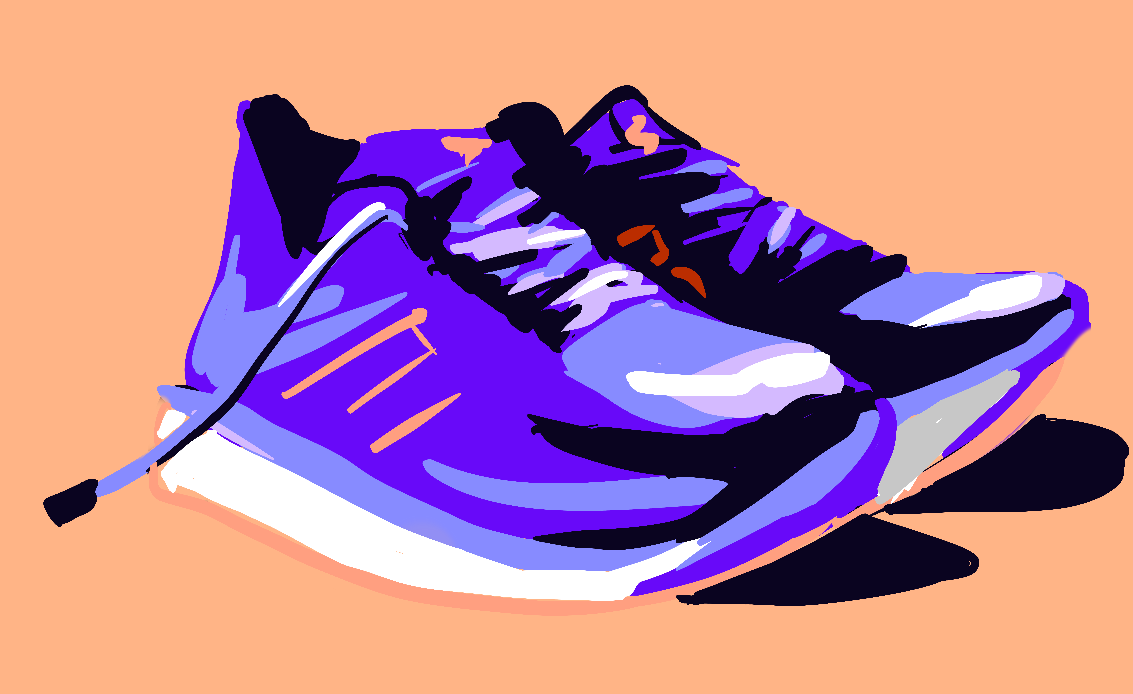SEAS Research uncovers how runners stay upright on uneven terrain
The lab of Madhusudhan Venkadesan recently published a study that finds runners rely on the body’s natural response to stay upright while running over uneven terrain.

Lizzie Conklin, Staff Illustrator
A recent study by the lab of Madhusudhan Venkadesan in the School of Engineering and Applied Sciences has shed light on how runners stay upright while running on uneven ground.
The research revealed that humans rely on the body’s mechanical response for stability, as opposed to a deliberate response. Furthermore, it found that runners exhibited similar levels of efficiency in motion and energy consumption on uneven terrain as they do on flat surfaces, and rather than consciously plotting out each step, the body’s natural response guides navigation on relatively level surfaces.
“Long-distance running — it’s what drove human evolution in the last two million years,” Venkadesan, an associate professor of mechanical engineering and materials science, told the News.
The team employed mathematical and statistical modeling to measure and analyze stepping locations and footstep patterns, testing subjects who have run at least one half-marathon or marathon in the past year in India. Built upon data from a past paper, the study compared how runners might seek out the flattest path and compared it to how runners actually guide their steps.
To achieve this objective, the researchers set up three 24-meter-long custom-made tracks that allowed the researchers to accurately digitize the surface with peaks and valleys and a motion-capture system that visualizes the subject’s center of mass.
Nihav Dhawale, a postdoctoral researcher in the Venkadesan lab and a graduate of the National Centre for Biological Sciences in Bangalore, India, highlighted the distinctiveness of the experimental arrangement.
“Building terrains like this haven’t really been attempted before, at this scale, and having the track custom-made allowed for greater accuracy in the analysis portion,” Dhawale said.
The findings have key evolutionary implications for understanding how running evolved in humans with regard to hunting and looking for prey. With vision being central to tracking footprint and searching for prey, the need for the body to naturally stabilize itself is crucial, especially while running.
The results could also change the way that locomotive robotics are designed and controlled. Because current robots are primarily vision-based, the results propose that robots do not necessarily require the detailed planning of every step, which could reduce the difficulty of control for engineers.
Venkadesan suggested future research studies investigating the effect of types of training on trail running, a skill distinct from treadmill running and track running, on energy consumption, the incidence of injury, and other parameters.
Marcus Lisman ’25, president of Yale Club Running, expressed his interest in the study. The finding that humans intuitively plot their steps on trail-running resonated with him.
“When you’re running, you’re not going to hit the ideal point of stability every single time,” Lisman said. “Instead, it makes sense that the body’s mechanical systems will compensate for any uneven surfaces.”
Demilade Omolade ’26 agreed with the findings as an avid outside runner who has experience in cross country and track.
“By engaging my abdominal muscles, I just feel more stable,” Omolade noted. “The glutes, the hamstring – all of the muscles working together in harmony really help runners stay stable in running, including on uneven places.”
In addition to the work from this study, Venkadesan’s lab explores a variety of fundamental topics at the intersection of biomechanics, control and evolution.
Venkadesan also emphasized the importance of experience outside the classroom that allows for hands-on interaction with subject matters, describing how the application of research findings can emerge at times in unexpected ways.
“There is no recipe to research. Let your curiosity and desire to dig deep guide you,” he said. “We are surrounded by so many questions and interesting phenomena that beg to be explained.”
A list of the ongoing projects and published papers Venkadesan and his team work on can be found here. Published in eLife, the comprehensive research article can be found here.







